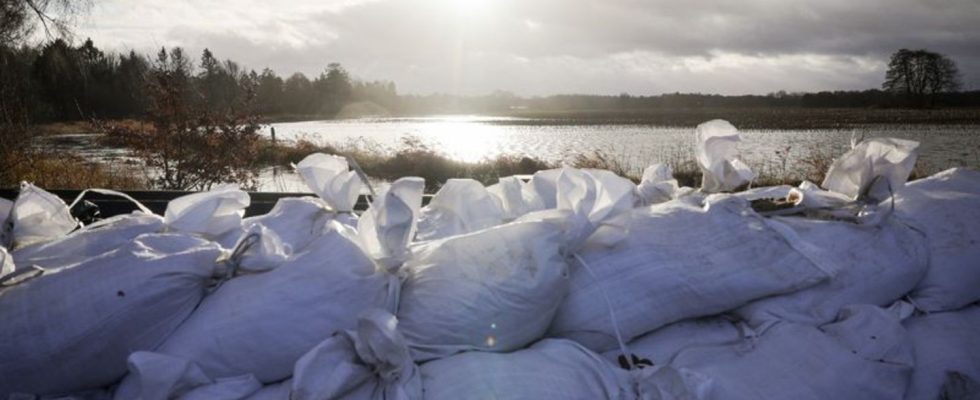Climate crisis
High water pressure increases the risk of dike breaches
Sandbags on a country road at the entrance to Sandkrug near Oldenburg. photo
© Christian Charisius/dpa
Continuous rain is causing water levels to rise. The strain on the partially softened dikes is growing – and with it the risk of dikes breaking, says an expert.
According to an expert, the water pressure that has persisted for days and water levels rising again in some cases is currently increasing the risk of local dike breaches. “So far we have not seen any dike breaches because the technical flood protection works well and, above all, the disaster relief is excellently organized,” said the head of the Ludwig Franzius Institute for Hydraulic, Estuarine and Coastal Engineering at the Leibniz University of Hanover, Torsten Schlurmann German press agency. But in many places, dikes have been weakened as a result of the flooding that has been going on for days. With water levels rising again after continuous rain, the strain on the dikes is becoming even greater.
“The dikes provide sufficient protection against flooding as long as water does not accumulate on them for a long period of time,” said the professor of hydraulic engineering and coastal engineering. The stability of one The dike then depends on many different factors, such as how large the gradient is between the pressure caused by the water level in the river and the land side of the dike, what material the dike is made of and what ground it stands on.
An important task for the emergency services is therefore to constantly monitor the dikes, for example with dike walkers on the ground or with the help of drones from the air. In the event of a possible dike breach, signs can be recognized beforehand. The greater the water level in the river and the longer the damming lasts, the more water is pushed through the dike, said Schlurmann. “What can then inevitably happen is that the water washes out material from the inside of the dike. Then the dike loses its internal load-bearing capacity. As soon as water seeps through the dike and escapes on the land side, that is a sure sign that danger is imminent is.”
Measures would then have to be taken immediately, for example by securing such areas with sandbags in so-called spring cades, a dike defense technique. The scientist does not expect the situation to ease until the weekend.

